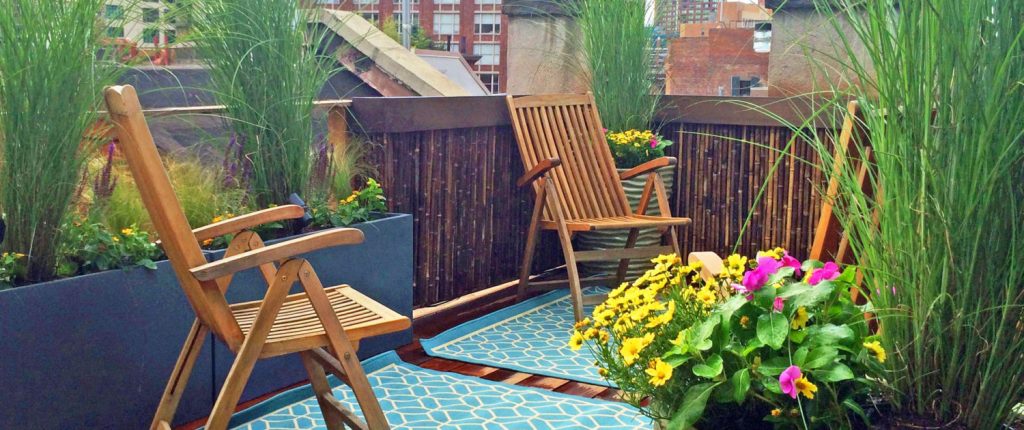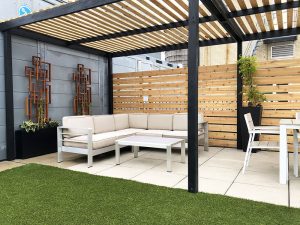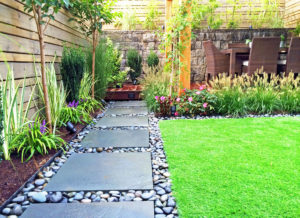
Nestled between skyscrapers, city gardens are like little hidden jewels, seen only by the birds and airplanes that fly overhead. Nothing brings peace to people’s lives more like a city garden, which offers an escape from the hustle and bustle of everyday life. They are also some of the most challenging spaces to design, due mostly to the extreme conditions that can be found in city gardens, ranging from small shaded backyards to the mountain-top like conditions of a sunny roof garden. Here are a few tips to help make city gardening more enjoyable:
REDUCE CLUTTER
A small space will feel larger the less clutter there appears to be. Having lots of individual, free-standing planters and furniture in different styles can make the space feel smaller and more hodgepodge. Pick 2-3 colors to work with and 2-3 textures and repeat those elements in different combinations to make the space feel more harmonious and well designed. I generally chose no more than 2-3 planter styles as well in any small garden.
MAXIMIZE THE SPACE
Let no corner go wasted in a small space. Opt for fewer, larger pieces of furniture, rather than lots of smaller ones. A connection should exist between the interior and exterior of a home, so that the garden appears to flow outward as a natural extension of the inner space. It’s important to create a sense of rhythm and flow that is as seamless as it is beautiful.
THREE’S COMPANY
It’s interesting how groups of three objects generally look better than than groups of two or four. For whatever reason, odd number pairings work better and stand out more visually than even numbered pairings. It’s easier to create symmetry in even numbered groupings, but odd numbers are more dynamic and visually appealing.
LET THERE BE LIGHT
One of the most important influencers of mood in a space is the lighting. For an outdoor space, try to have a mix of high-voltage sconce lighting and low-voltage up-lighting mixed in with the plants themselves.
WHY THE LONG SPACE?
Long spaces can be broken up into separate “rooms” to help create a cozier, more intimate feeling. Terraces and decks can easily be divided up by having part of the space used for one task – i.e. dining, and another part for something else, i.e. comfortable lounge seating. Furniture and rugs can be placed in such a way as to create a separation of the different spaces for the feeling of multiple rooms all in one place.
THINK LIKE A MOUNTAIN
A garden on a terrace or rooftop is similar to a garden on top of a mountain. If we look to nature for inspiration, we can see that plants on top of a mountain are heavier at the bottom, i.e. conifers, which prevents them from blowing over in a strong wind. Top-heavy plants like lollipop-shaped trees will have a tendency to blow right off the rooftop. Also, plants with smaller leaves typically hold up better in the wind than plants with larger leaves that can get shredded up very easily.








